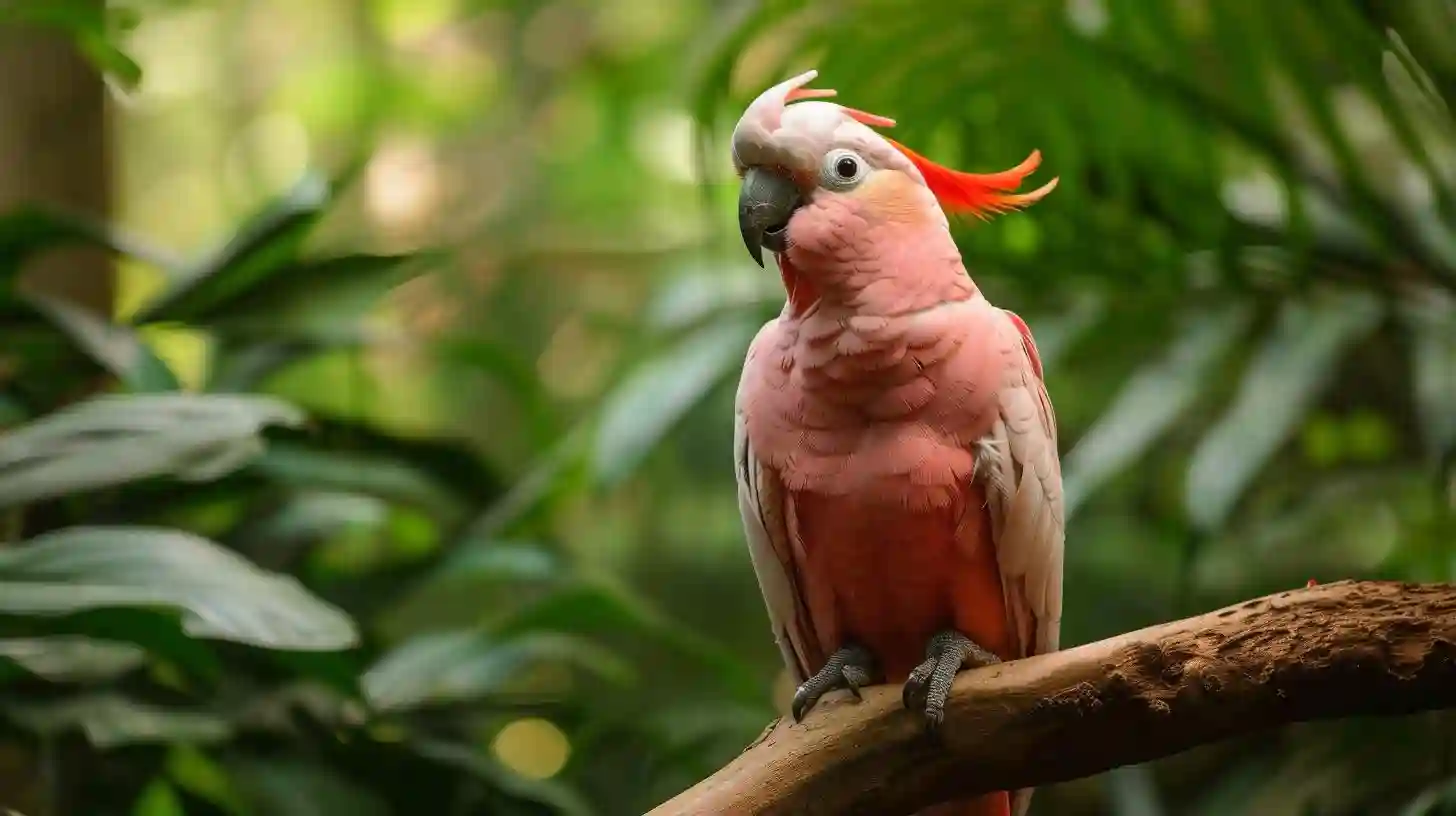
The Pink Cockatoo, also known as Major Mitchell's Cockatoo, is a stunning and elegant bird native to Australia. With its vibrant pink and white feathers, colorful crest and charming personality, the Pink Cockatoo is one of the most beautiful and sought after cockatoo species in the world.
Named after the famous explorer Major Sir Thomas Mitchell, who first documented the bird in the 19th century, the pink cockatoo is beloved for its unique appearance and friendly behavior. The scientific name Lophochroa leadbeateri honors the English ornithologist Benjamin Leadbeater, who first described the species in 1822.
The pink cockatoo is medium-sized, 35 to 40 centimeters in length, with a wingspan of approximately 70 to 80 centimeters. It has a distinctive ring of bright pink feathers around its eyes and a feathered crest on the top of its head that can be raised or lowered depending on its mood. The rest of the plumage is predominantly white with shades of pink on the wings and tail feathers.
In the wild, the pink cockatoo is found in inland Australia, primarily in the semi-arid and arid regions of Queensland, New South Wales, South Australia and Western Australia. It prefers open forests, shrubs and grasslands, where it feeds on seeds, nuts, fruits and insects. The pink cockatoo is a social bird that forms close bonds with members of its flock and communicates through a variety of vocalizations, including calls, whistles and squeals.
One of the most distinctive features of the pink cockatoo is its elaborate courtship display. During the breeding season, males perform elaborate dances and vocalizations to attract females. After forming a pair, they build a nest in a hollow tree or crevice, where the female lays 2–3 eggs. Both parents take turns incubating the eggs and caring for the chicks, which fledge after about 10 weeks.
Unfortunately, the pink cockatoo faces threats in the wild, primarily due to habitat loss, illegal capture for the pet trade, and competition with introduced species. Efforts are being made to conserve the pink cockatoo and its natural habitat, including the establishment of protected areas and captive breeding programs.
In captivity, the pink cockatoo is a popular pet due to its striking appearance and attractive personality. However, this requires experienced bird owners who can provide the proper care, attention and enrichment to ensure their well-being. The Pink Cockatoo is very intelligent and sociable and requires a lot of mental stimulation, social interaction, and opportunities for exercise and play.
Like all cockatoo species, the pink cockatoo is known for its loud vocalizations and potential for destructive behavior if not trained and socialized properly. It is important for owners to provide a spacious cage, regular opportunities to fly, a varied diet of seeds, nuts, fruits and vegetables, and mental stimulation through toys, puzzles and learning exercises.
Overall, the Pink Cockatoo is a charming and charismatic bird that captures the hearts of bird lovers around the world. His beauty, intelligence and playful nature make him a pleasure to watch and interact with, both in the wild and in captivity. By raising awareness of the pink cockatoo and supporting conservation efforts, we can help ensure the survival of this magnificent species for future generations to enjoy.